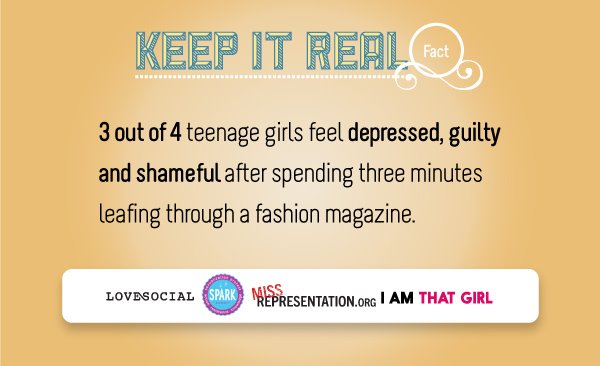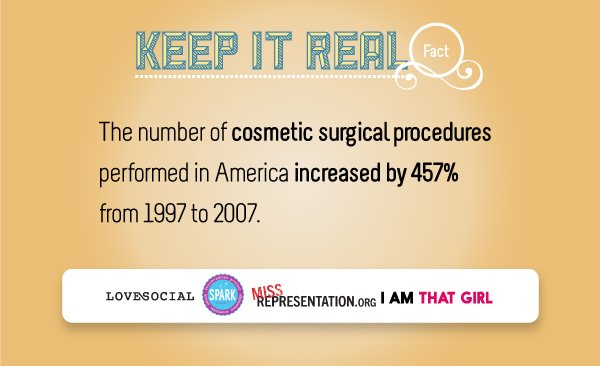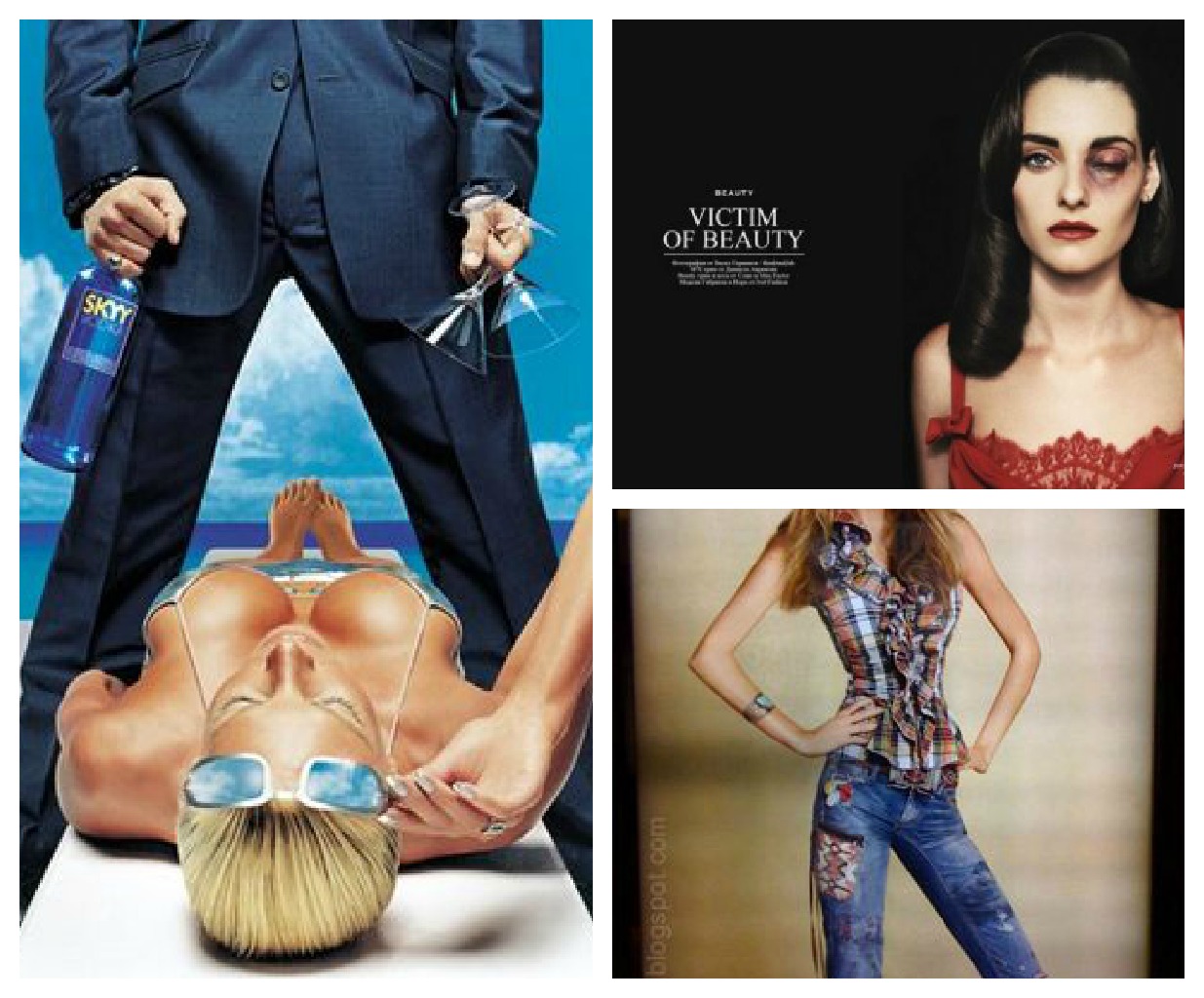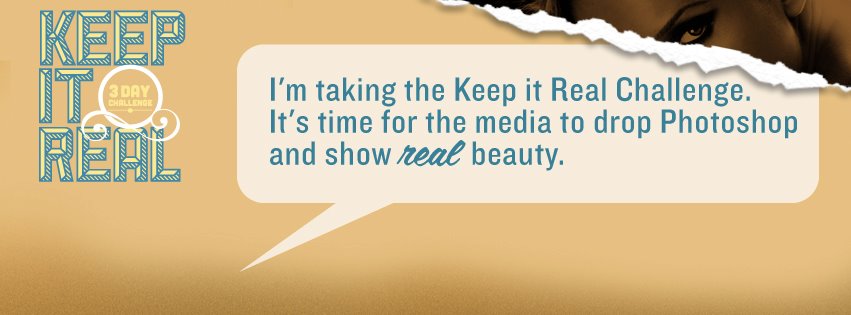What "Keep It Real" Means to Me:
 This is my niece. I want her to grow up and look just as she does now--happy, confident, & comfortable with herself. I know that together we'll weather adolescence and all of the insecurities that alone raises but one thing I do not want for her (and my children someday) is to grow up with an unattainable ideal (and ideas) of beauty.
This is my niece. I want her to grow up and look just as she does now--happy, confident, & comfortable with herself. I know that together we'll weather adolescence and all of the insecurities that alone raises but one thing I do not want for her (and my children someday) is to grow up with an unattainable ideal (and ideas) of beauty.
 The internet, while a wonderful & glorious thing that I cannot seem to remember life without, contributes to this problem. Today we are bombarded with unrealistic images of women & beauty that produce even more unrealistic expectations. We are rapidly becoming a more and more visual culture--television, movies, advertisements, & a plethora of social media are now a part of daily routine.
The internet, while a wonderful & glorious thing that I cannot seem to remember life without, contributes to this problem. Today we are bombarded with unrealistic images of women & beauty that produce even more unrealistic expectations. We are rapidly becoming a more and more visual culture--television, movies, advertisements, & a plethora of social media are now a part of daily routine.
 Because of this hyper-technological lifestyle, magazines & companies are competing to both capture & hold our attention by resorting to creating content that is often violent (I'm thinking here of the recent "Victim of Beauty" photo spread in Bulgarian Magazine), hypersexualized (too many examples to cite!), and unrealistic (photo-shopping models who are already thin). The result is a generation of women who are conflicted and ashamed of how they look.
Because of this hyper-technological lifestyle, magazines & companies are competing to both capture & hold our attention by resorting to creating content that is often violent (I'm thinking here of the recent "Victim of Beauty" photo spread in Bulgarian Magazine), hypersexualized (too many examples to cite!), and unrealistic (photo-shopping models who are already thin). The result is a generation of women who are conflicted and ashamed of how they look.
 What we need are more representations of real women--of real beauty (warts & all!). People aren't perfect and often it is the imperfections that make people, faces, images, etc. so fascinating & memorable. This week, Miss Representation & women everywhere, are standing up for themselves & asking that magazines print at least one un-photoshopped image of a model per issue. If you'd like to learn more, click here to download a poster & information on the "Keep it Real" social media movement.
What we need are more representations of real women--of real beauty (warts & all!). People aren't perfect and often it is the imperfections that make people, faces, images, etc. so fascinating & memorable. This week, Miss Representation & women everywhere, are standing up for themselves & asking that magazines print at least one un-photoshopped image of a model per issue. If you'd like to learn more, click here to download a poster & information on the "Keep it Real" social media movement.
 What "Keep It Real" Means to My Business (the Handmade Movement & Small Businesses):
What "Keep It Real" Means to My Business (the Handmade Movement & Small Businesses):
After seeing the Miss Representation documentary last October, I re-examined the way I presented my jewelry online & in advertisements I'd created. I also revisited my business's brand & mission. The handmade revolution to me is about environmental and cultural conscious consumerism (as well as an appreciation for craftsmanship and artistry, valued before the days of the industrial revolution).
Buying handmade means that I can support businesses that value the same things I do. As a salvage artist, the bulk of my jewelry is from upcycled or recycled things. And for the most part, I have seen a trend in that kind of production–environmentally friendly and conscious creation. What is not as widespread in the handmade movement is a cultural consciousness. What do I mean? Some handmade businesses use sexploitation as a means to promote their business. There are also a fair amount of handmade businesses that utilize thin models (and photoshop them to unrealistic proportions). You have probably seen these kinds of exploitative photos frequently featured on Etsy’s front page, in fact Regretsy has parodied this very fact in a blog post, “Gratuity Included.” I asked myself, why are small, handmade businesses perpetuating the same exploitative and damaging images of women as big business? Everyone knows and agrees that “sex sells,” but should it?
 Furthermore, small business owners (like myself) need to also ask--what message we're attaching to our products. As handmade business owners & makers we put a lot of thought into our products–how we make them, what materials we use, how to display our products, & how to photograph them. We do a lot of that work ourselves. I think we should also be aware of what we are indirectly selling & what messages we are encoding with that cute hand stitched headband, necklace, or tea towel.
Furthermore, small business owners (like myself) need to also ask--what message we're attaching to our products. As handmade business owners & makers we put a lot of thought into our products–how we make them, what materials we use, how to display our products, & how to photograph them. We do a lot of that work ourselves. I think we should also be aware of what we are indirectly selling & what messages we are encoding with that cute hand stitched headband, necklace, or tea towel.
A Call to Arms!
As a handmade business owner and a woman, I think it is important to be culturally responsible. We (and this is an invitation to every handmade business owner, not just women) must be conscious of the ways in which we advertize on our Facebook pages, blogs, websites, Twitter, and Etsy shops. As Avandi Wallace astutely observes, “You can’t be what you can’t see.” So let’s show the next generation a more positive image of women–let’s lead by example. Join in and "Keep it Real!"

